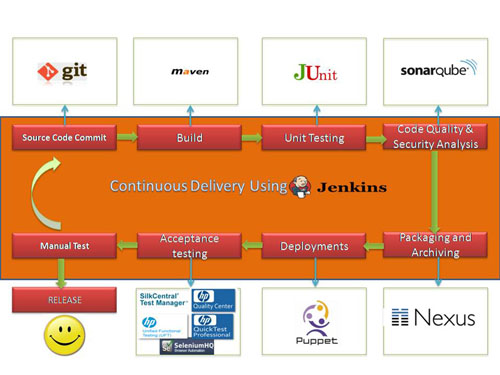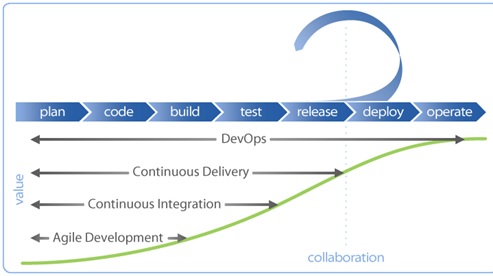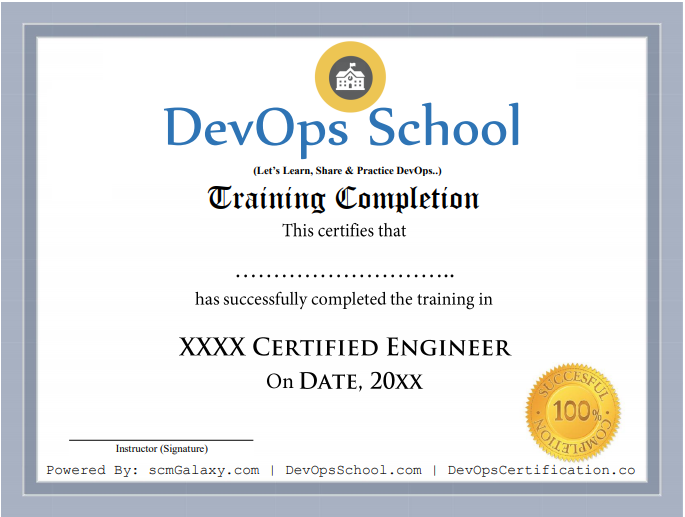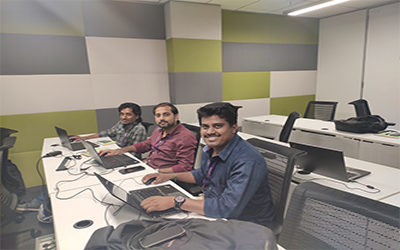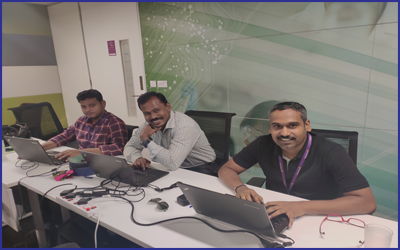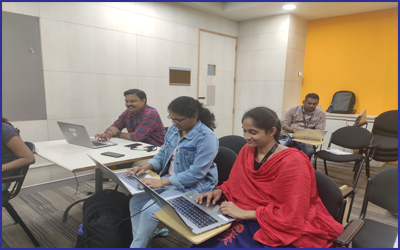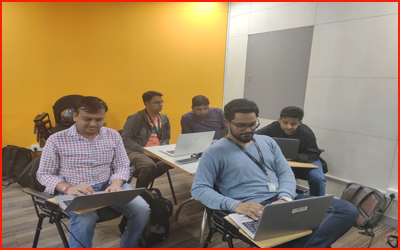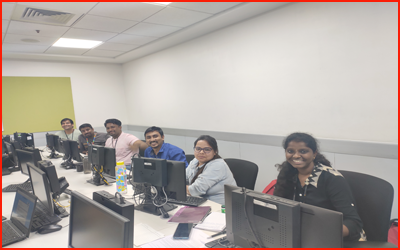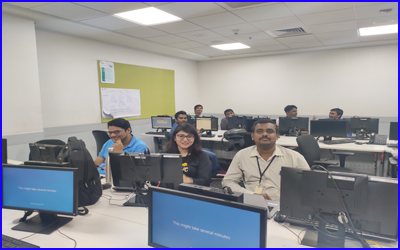About DevOps Training In Bangalore
DevOpsSchool provide Best DevOps Training in Bangalore by expert trainer. Our DevOps instructors are working in DevOps and related technologies with more than 15 years in IT industry. Our team of DevOps trainer offers DevOps in Classroom, Online and Corporate training services. Our training will be handled in either weekday and weekend’s program depends on participant’s requirement.
What is DevOps?
DevOps is a product management method that aims to integrate application development (Dev) and operations (Ops). The main purpose of this method is to support the automation. It also monitor all the steps in software creation: from building, testing and deployment. It deliver new software features and services. Adoption of DevOps process in your organization leads to customers’ satisfaction and great user-experience because new products and services are delivered quickly and with high quality.
DevOps is a software development process that emphasizes communication, integration and collaboration between software developers and information technology (IT) professionals. It allows organizations to create and improve products at a faster pace than they can with traditional software development approaches. DevOps is characterized by operations staff using many techniques similar to developers for their system work.
DevOps allows Agile Development teams to implement continuous integration and continuous distribution. This helps them to launch products faster in the market. DevOps helps in increasing the speed of an organization to deliver applications and services. It allows organizations to provide better service to their customers and compete more strongly in the market.
Benefits of DevOps:
- Continuous software delivery
- Less complexity to manage
- Faster resolution of problems
- Faster delivery of features
- More stable operating environments
In simple words, DevOps can be defined as the alignment of development and IT operations with better communication and collaboration.
How DevOpsSchool.com will help in your DevOps Training Needs?
DevOpsSchool provides you the expert DevOps trainer at cost-efficient price. Our trainers have expert knowledge of DevOps and have 15 years of experience in this industry. We will provide you the course completion certification of that particular course. Which is industry recognized. Every participant have lifetime access of all learning materials like PDFs, PPTs, and Videos. Participants will also get the lifetime access of Quiz to every topic. We will provide you the training in different cities like Bangalore, Pune, and Hyderabad. If you are fresher’s and want to learn with free contents on several topics then you also browse our Tutorial section. We also provide you the technical support for your projects which is very important for you to complete at any cost.
Our DevOps Trainer
We will provide you the expert trainer from worldwide. Rajesh Kumar is one of the expert trainers that will give you the training of each topic. He is one of the top 10 DevOps trainer in India. If you have any query about topic then you can also join our Linked, Facebook and Google groups.
Key Highlights
30 DevOpos Tools Included
20 Live & Interactive Sessions
250 Hrs Self-paced Videos
60 Hrs Project & Exercises
Certified by DevOpsSchool
Lifetime Access to Videos Library
Interview & Assessment Support
1 month of internship with MNCs
Working Professionals & Freshers
Real time Projects
Lifetime Free Videos Library


